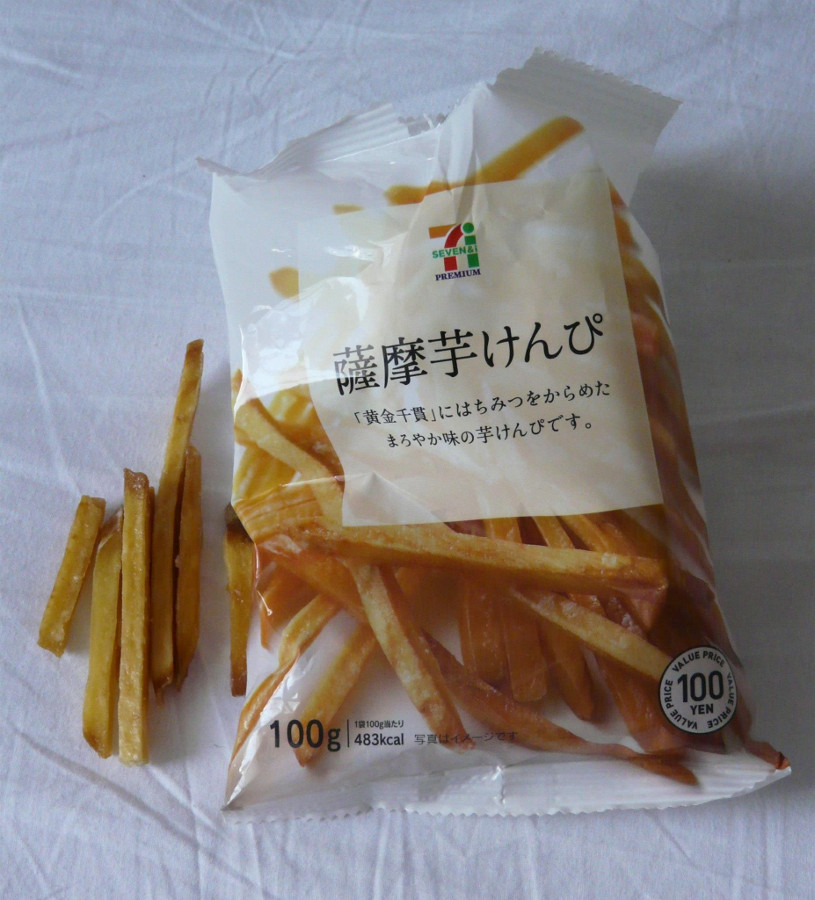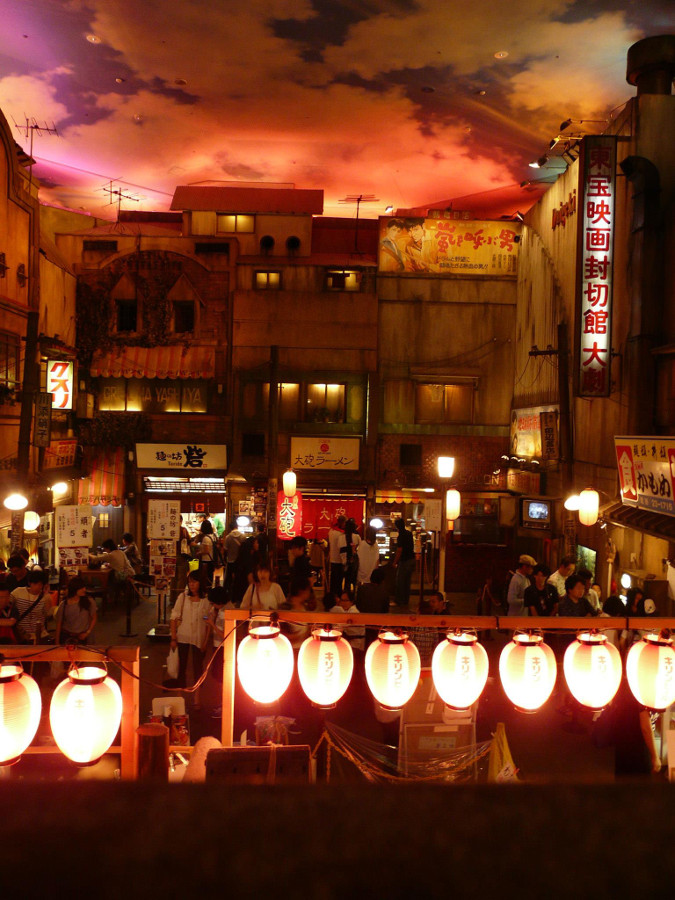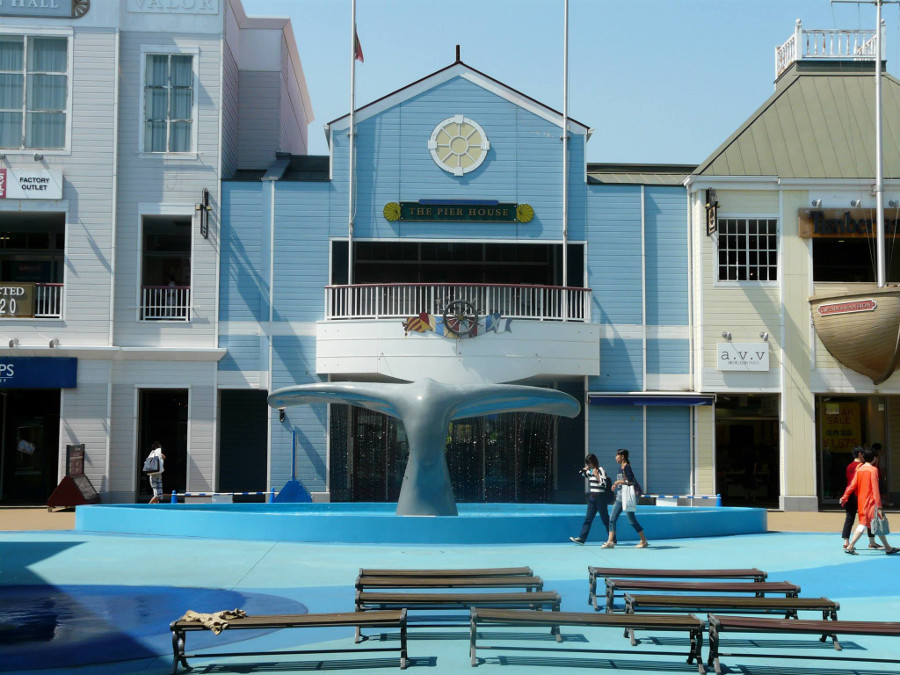I was very lucky to not to suffer from the jet lag. As a result, I could successfully wander here and there in Yokohama – the first destination of my travel to Japan. For some of the city name does not say much, and is not associated with anything interesting, as opposed to names such as Tokyo or Kyoto. I assure you, however, that there are many charming and interesting places to see, and thousands of opportunities to fully experience the culture of Japan.
 Yokohama Industrial Park
Yokohama Industrial ParkIn a typical Japanese flat
First, we directed our steps towards the apartment in which we were to sleep. However, getting inside was not as easy as I thought. Even for Japan, this one was an unusual solution. First of all, we had to locate a specific mailbox and open it using the code number 1. In the box there was a padlock which opened after entering the code number 2, and in its interior was hidden the key to the door to the stairway and the apartment.
My first impression upon entering the apartment was positive. Before I came to Japan, I could not imagine a fully equipped apartment of 21m2. Nevertheless, it appears that this is possible. Moreover, the size of a typical Japanese housing is in the range from 16 to 20m2. We had so much space for ourselves 🙂
The apartment had a tiny corridor in which everybody should take off their shoes – even guests should remove them there. Near the corridor was placed a closet that hid a washing machine. Right behind it was a fully equipped kitchen with stove, microwave, refrigerator, sink, and cabinets. On the other side of the wall from the corridor’s side was located a toilet, and right next to it a separate bathroom with a shower/bath, small closet, and sink. Instead of the traditional futon we had a double bed in the sleeping room, wardrobe, cupboard, a TV, and air conditioning (priceless during the September heat). There was also a tiny balcony.
 Yokohama’s Chinatown
Yokohama’s ChinatownIn this situation, what else could I have done than turn on the TV for a while? I expected the programs to be at the level of those that can be found on Youtube. I found only one, definitely aimed at younger viewers. In addition, I found news and teleshopping. The only striking and important difference between TV in Japan and in Poland were ads that were shown non-stop on the right side and at the bottom of the screen as static pictures and text. This is not a standard Japanese TV, but “a demo version” for those who have not paid for a subscription. After this short adventure I decided not to explore the Japanese television further.
Shops and their content
When one visits a store where one should pay with yens, they soon find out why the Japanese so often eat outside their home – cooking alone does not necessarily pay off. It is possible that cooking for the family has economical sense. If, however, I were to organize a party for my Japanese friends, I’d definitely take them to a pub – the prices are reasonable compared to the prices of products. Moreover, the time saved is priceless. About the Japanese parties I will tell you in a while.
 Japanese Snacks: octopus (it was very good, tasted slightly of vinegar, good for chewing)
Japanese Snacks: octopus (it was very good, tasted slightly of vinegar, good for chewing)One of the strangest discoveries to make in Japan is that fruits and vegetables are not sold by the pound, but by pieces. Even those that are obvious to the Europeans, like potatoes or carrots. In addition, the prices of these products are cosmic. For 100 yen (in 2012 – 4PLN) one might be able to buy one potato. For example, one peach from a local farmer cost 500 yen. Peach of the same species, but imported from China was slightly cheaper, so indigenous products were still competitive. More interesting were the pears that looked like apples and were incredibly juicy.
In search of the product for 100 yen I stopped by the snacks. My attention was caught by macadamia nuts in chocolate, which I had never eaten. They cost 120 yen, so I took them. It was quite a disappointment that after a few bites I ran out of peanuts.
 Japanese snacks: potato in caramel (complete surprise, very hard, not for me)
Japanese snacks: potato in caramel (complete surprise, very hard, not for me)Japan is a country of rituals and ceremonies. Even ordinary purchases are sprinkled with customs, which should be paid attention to. The most notable is giving the change. Not in all stores is a man calculates the change from the purchases – sometimes it is calculated and issued by a special automated cash registers. Nevertheless, before the change finds the way to the client’s hands, the Japanese salesperson will check it in front of our eyes. The change will be given in two hands, banknotes on the bottom, and coins on top to make everything visible. It should also be taken in two hands: it is a sign of respect from both sides. The same rule shall apply when exchanging business cards. At the same time, under any circumstances, do not check the change yourself – this is equivalent to the loss of face of the store’s employee who double-checked the change.
Also saying farewell with the staff is a bit different than in Europe. In European countries “thank you” and “goodbye” are uttered only once. In Japan, the first is heard “thank you” from the salesperson after the release of the change. When the buyer thanks, the staff thanks you once again, this time using the past tense. The ritual is completed.
 Inside the Ramen Museum
Inside the Ramen MuseumWalking Yokohama
While strolling through the streets of Yokohama and carefully watching the Japanese one can learn about them very much. I have never seen such clean streets. There are only few homeless people, and each of them is clean and tidy. They have their belongings in small prams, and perfectly put together. No one begs. In September, the people of Japan no longer wear shorts. They wear long jeans, although it is still boiling hot, and they must cool themselves with handkerchiefs and fans, or hide from the sun under an umbrella. This is because the holiday season is over, so they dress appropriately, which is not necessarily in line with the current weather.
If any road works are carried out, a suitable alternative path is determined. Security is guarded by at least three people, who inform passers-by which way they should go. Even if the path length is 10m and it is designated with paint and reflective cones. As if that were not enough, the service staff of these paths are equipped with lamps resembling short light swords (for better visibility). Persons performing similar work can be found at the escalators – then they politely remind to remain careful not to cause an accident.
 Stylized shops at Mitsui Outlet Park
Stylized shops at Mitsui Outlet ParkYokohama is not only comprised of familiar pictures. The city has an amazing Chinatown, beautiful view from Landmark Tower (where the elevators ride at a speed of 45km/h), and Mitsui Outlet Park. One can also visit the ramen museum. Bars that specialize in preparing this particular soup can be easily found in Japan, but those having their headquarters in the museum are considered to be one of the best, and the queues can be long for them. An interesting experience is eating ramen noodles with chopsticks, which is not as easy as it may seem 🙂
Unfortunately, the most sharp memory of Yokohama is that of a cold that flew with me from Poland, and pushed me into the bed for two days. Although Japan does not have our medicine, we have found in the Internet information about the appropriate replacement for aspirin. Those pills put me on my feet, and after those two days (having only a runny nose) I could experience the charms of Japanese trains and explore the country further – this time the castle in Odawara.

